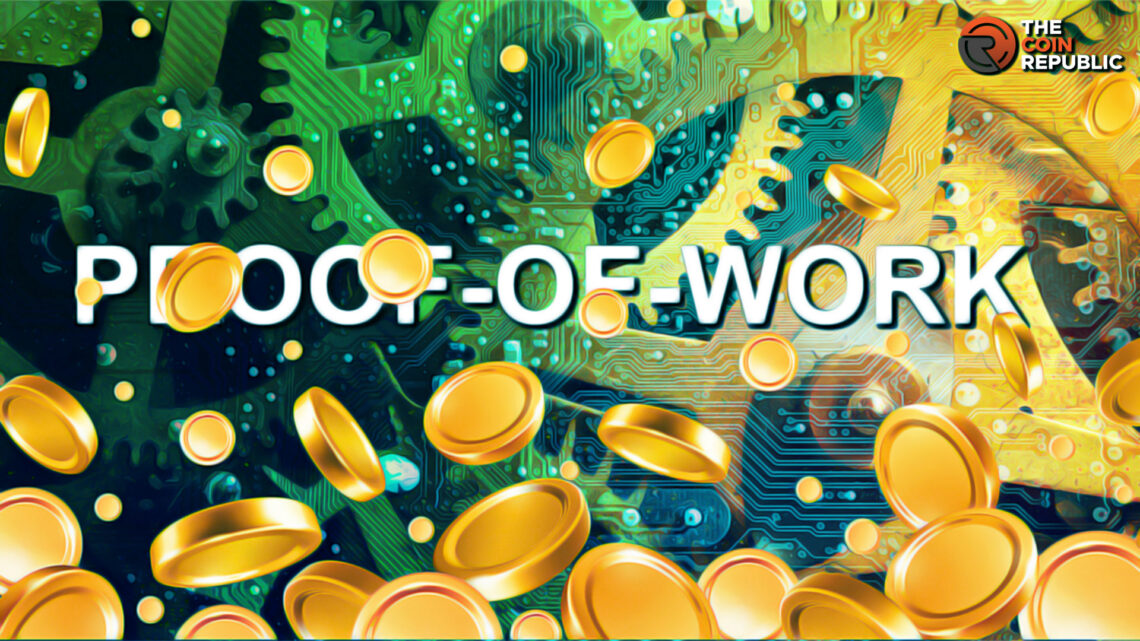- 1 Proof-of-work is the first and most prominent consensus mechanism in the crypto space.
- 2 It ensures high security and a decentralized nature, and offers rewards to its miners.
The first-ever cryptocurrency was developed using a proof-of-work consensus algorithm. To understand this complex mechanism that creates a digital asset, one needs to dig deeper. Also, they have to do an overarching study of it to truly apprehend its significance. So let’s delve into the world of PoW and see what it offers.
Tracing the Evolution of Proof-of-Work
If one traces the history of PoW, one needs to go back to 1993. That is when Cynthia Dwork and Moni Naor looked for a solution to deter DoS attacks. They propounded a method called proof-of-work which blocked the entry of outsiders in a virtual network. Four years later, Adam Black deployed the same mechanism in Hashcash in 1997.
This time, the algorithm was used to prevent spammers from sending emails in large volumes. It increased the computational difficulty and thwarted the attempts of malicious actors. From there, the algorithm gained attention among those who were looking for some pioneering digital solution.
The idea reappeared in papers like “Shelling Out: The Origins of Money” and “Theory of Collectibles.” In 2004, renowned software developer Hal Finney worked on the concept and called it reusable proof-of-work. Finally, in 2009, a pseudonymous individual or group called Satoshi Nakamoto created the first cryptocurrency, Bitcoin, using PoW.
It solved the problem of double spending and became a successful digital currency.
A Peep into the PoW Mechanism
Although Bitcoin emerged as the first crypto, it wasn’t the first attempt in that context. Few others tried to make a digital asset before that but they failed to solve the issue of double spending. Satoshi made some improvements that changed the way the algorithm worked.
It enabled individuals to verify the transaction using a certain validation mechanism. In return, it incentivized them with some amount of Bitcoin. It was a groundbreaking invention that allowed the laymen to generate a means of exchange without involving the government.
This gamification encouraged participation in the blockchain and made it very popular among coders and programmers. However, as soon as the growth caught up, other issues started to crop up. The most notable one among them was power consumption. The implementation of PoW mining requires a massive amount of electricity.
It requires purpose-built machines that are equipped with graphics cards and many other components. So, governments and environmentalists panned Bitcoin for environmental concerns. While these issues still exist, the crypto domain found other ways to generate cryptocurrencies.
However, PoW remains the most dominant consensus mechanism in this space because cryptos made with it represent 60% of the total crypto market capitalization. Now, let’s learn about the two principal elements of PoW to gain a better understanding of it.
Miners
The miners are individuals who support the process of creating new blocks. They are also called nodes which are nothing but computers connected with the network. As mentioned above, these people solve mathematical equations to validate transactions. The transactions are generated in the blockchain.
Miners pick, validate, and add these transactions to the network while spending the computing power and resources. This mechanism is supported by the SHA-256 cryptographic hash which makes it different from the other consensus algorithms. Moreover, there’s something called the difficulty adjustment in the PoW mechanism that keeps the work challenging for miners.
It also ensures that the network takes a certain time to validate new blocks. According to the existing system, the difficulty adjustment happens after every 2016 block. Approximately, it takes almost two weeks to take place. Miners never try to tweak the difficulty level because it remains fair to them.
They win rewards upon guessing a hash generated by the network. Once they find a valid block hash, the information is spread across the blockchain. After that, other miners validate and add the new block to their blockchain copies. This process effectively removes the possibility of fraud and errors.
Rewards
The miners who find the hash and contribute to the creation of new coins win rewards. That’s the most indispensable part of PoW that keeps it running. Mostly, the rate of these rewards is fixed and changes rarely. After the second Bitcoin halving, the rates have been 6.25 bitcoin/block.
In addition, there could be some transaction fees. The rewards encourage the miners to do their jobs efficiently and honestly. Notably, the event of halving occurs every four years. In that duration, the number of blocks validated reaches nearly 210,000. Some people have expressed concerns that the price slash discourages the miners from doing their job.
Conclusion
Even with all the advantages, it’s hard to predict the future of PoW. The fact that it requires huge capital to begin with makes it very challenging for entrepreneurs. Above all, environmental concerns remain a big issue. So the world will have to wait and see how the PoW maintains its dominance.

Adarsh Singh is a true connoisseur of Defi and Blockchain technologies, who left his job at a “Big 4” multinational finance firm to pursue crypto and NFT trading full-time. He has a strong background in finance, with MBA from a prestigious B-school. He delves deep into these innovative fields, unraveling their intricacies. Uncovering hidden gems, be it coins, tokens or NFTs, is his expertise. NFTs drive deep interest for him, and his creative analysis of NFTs opens up engaging narratives. He strives to bring decentralized digital assets accessible to the masses.


 Home
Home News
News










